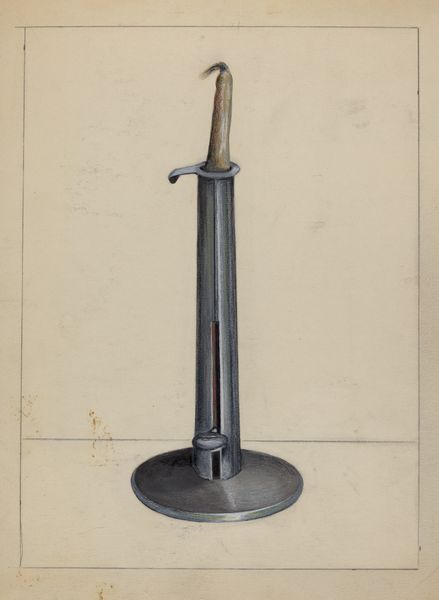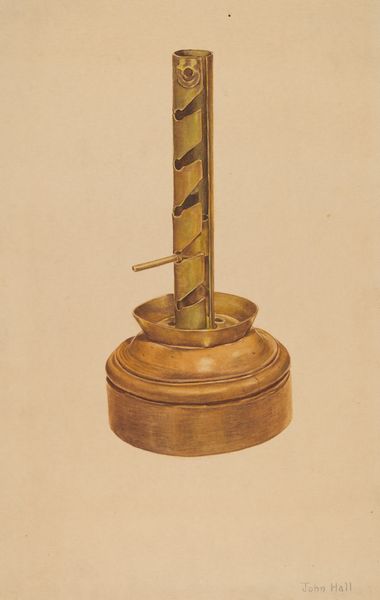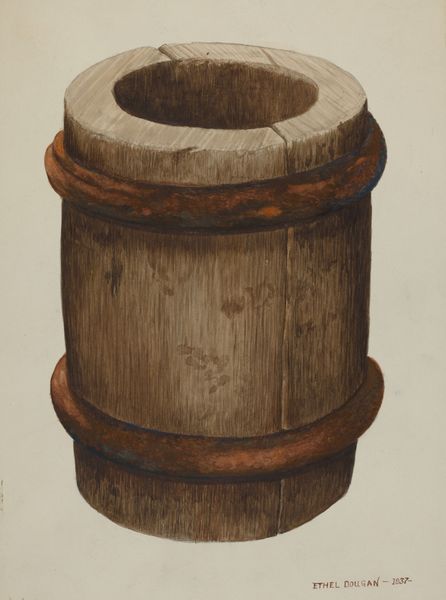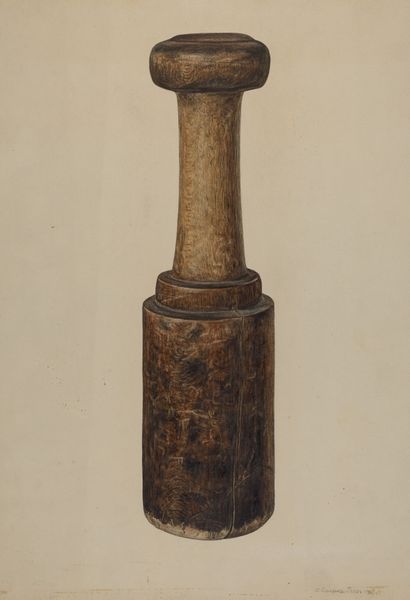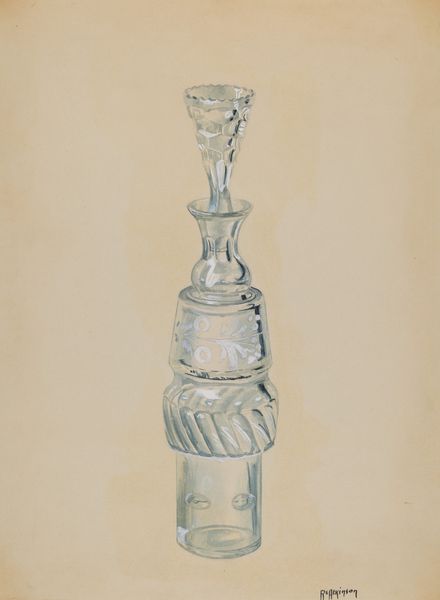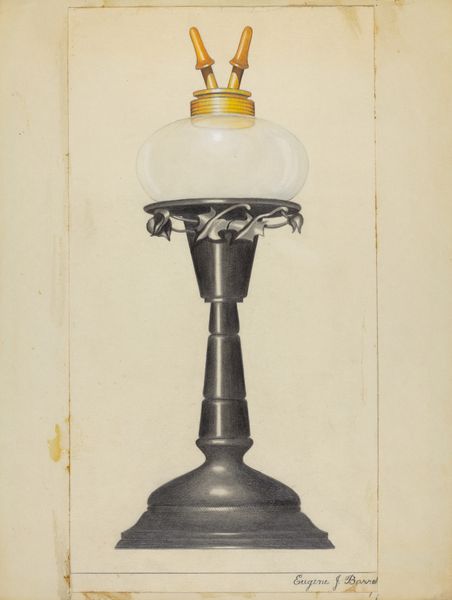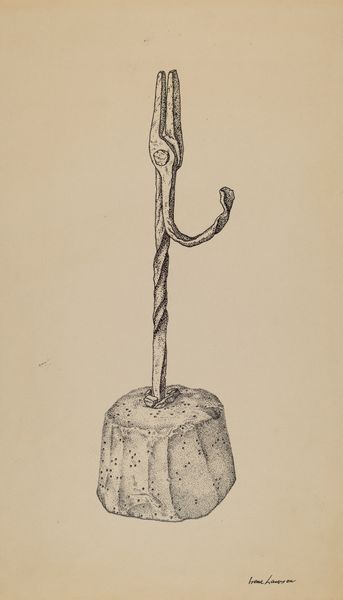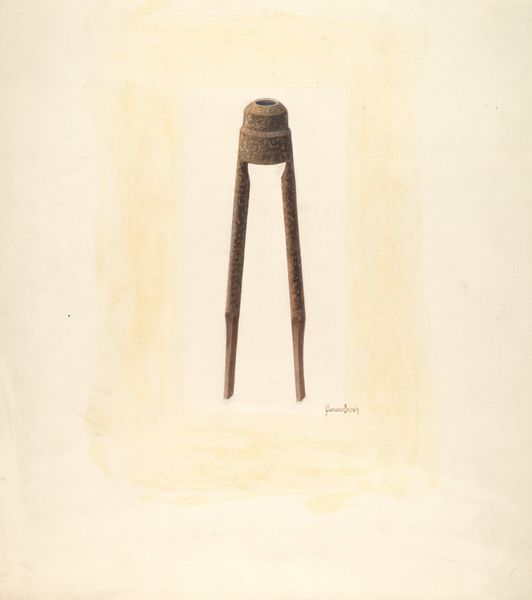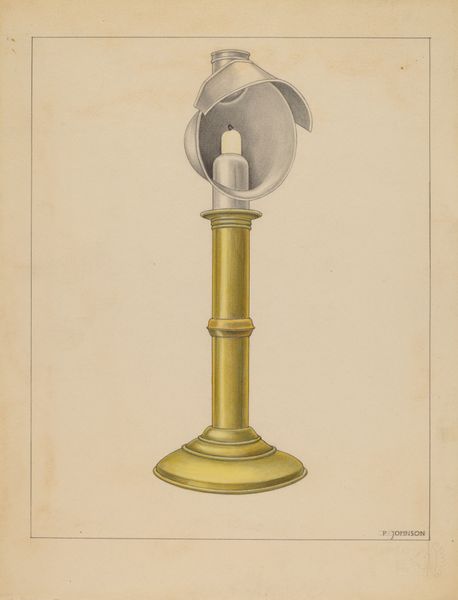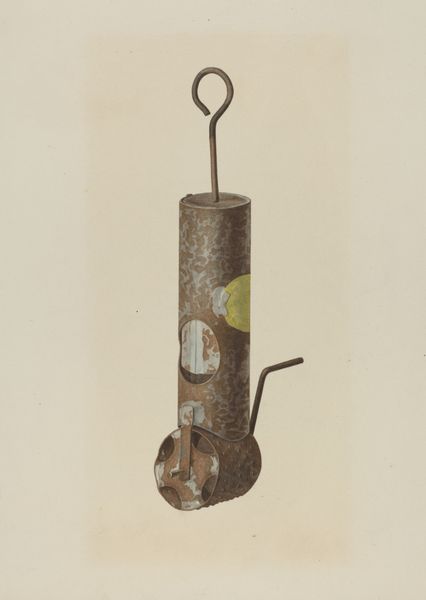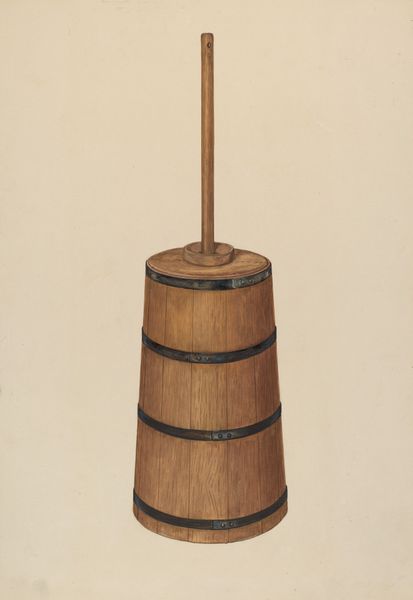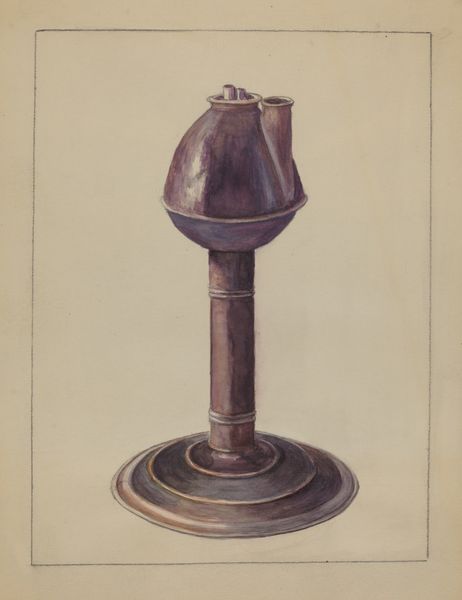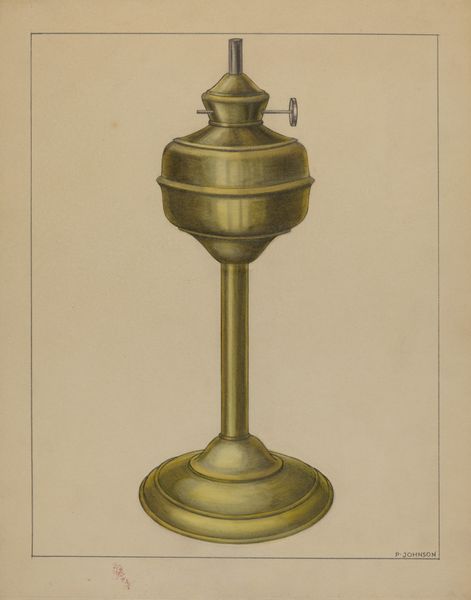
drawing, watercolor
#
drawing
#
watercolor
#
watercolor
#
realism
Dimensions: overall: 28.1 x 22.5 cm (11 1/16 x 8 7/8 in.) Original IAD Object: 21 3/4" high; top: 9 1/2" in diameter; base: 11 1/2" in diameter; height including handle: 49"
Copyright: National Gallery of Art: CC0 1.0
Editor: Here we have Ralph Atkinson's "Churn," likely created around 1937, using watercolor and drawing techniques. It has a rather straightforward, almost documentary feel. I am struck by its quiet, almost nostalgic, depiction of a simple object. How do you interpret this work? Curator: This artwork transcends a mere still life; it acts as a potent symbol of labor and domesticity, particularly within the context of rural America during the Great Depression. Consider how the churn, a tool almost exclusively used by women, represents the often invisible work that sustained families and communities. Can you see how it connects to broader narratives of gender roles and economic hardship of the era? Editor: Yes, now that you mention it, there is an absence here too, a missing figure… It’s not just a churn; it’s an absent labourer. Curator: Precisely. And notice the artist’s choice of medium. The delicate watercolor and precise drawing evoke a sense of fragility. In my view, this not only captures the object's physical form, but also subtly underscores the precariousness of rural life during this era. How does thinking about this change your perspective? Editor: It does. The image transforms from simple realism to something… heavier, more burdened by implication. It silently speaks of the economic precarity and gendered divisions of labor, of a specific time and place. Curator: Exactly! By examining the object and the way it’s depicted, we can unpack these greater sociological narratives and see art as a way to enter historical and social conditions. Editor: I’m going to look at everyday objects a bit differently going forward!
Comments
No comments
Be the first to comment and join the conversation on the ultimate creative platform.
